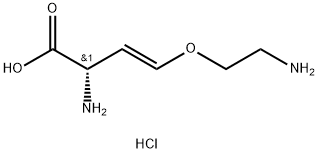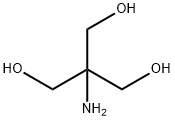Dithiobiuret
- CAS NO.:541-53-7
- Empirical Formula: C2H5N3S2
- Molecular Weight: 135.21
- MDL number: MFCD00037832
- EINECS: 208-784-8
- SAFETY DATA SHEET (SDS)
- Update Date: 2024-12-18 13:37:16

What is Dithiobiuret?
Description
Dithiobiuret is a colorless, crystalline solid.Molecular weight= 135.22; Freezing/Melting point =(decomposition) 189℃. Hazard Identification (based onNFPA-704 M Rating System): Health 3, Flammability 1,Reactivity 0. Soluble in water; solubility 5 0.25 g/110 mLat 25℃
The Uses of Dithiobiuret
Dithiobiuret is an intoxicant which causes ascending motor weakness when given chronically to rodents.
General Description
Crystalline solid. Used as a plasticizer, as a rubber accelerator, and as an intermediate in manufacturing of pesticides.
Air & Water Reactions
pH of the saturated aqueous solution is 5.8.
Reactivity Profile
Dithiobiuret is a thioamide, which may behave as a weak acid in solution and therefore will react with base foeming salts with production of heat. Dithiobiuret may react with acids and reducing agents to form toxic hydrogen sulfide gas. This may be vigorous depending on the nature of the reducing agent. Organic amides/imides react with azo and diazo compounds to generate toxic gases. The combustion of these compounds generates mixed oxides of nitrogen (NOx).
Health Hazard
The material is highly toxic. It may cause respiratory failure.
Fire Hazard
When heated to decomposition, Dithiobiuret emits highly toxic fumes of oxides of sulfur and nitrogen.
Safety Profile
Poison by ingestion and intraperitoneal routes. When heated to decomposition it emits highly toxic fumes of SOx and NOx.
Potential Exposure
This material is used as a plasticizer,as a rubber accelerator; and as an intermediate inmanufacturing of pesticides
First aid
If this chemical gets into the eyes, remove anycontact lenses at once and irrigate immediately for at least15 min, occasionally lifting upper and lower lids. Seek medical attention immediately. If this chemical contacts theskin, remove contaminated clothing and wash immediatelywith soap and water. Seek medical attention immediately. Ifthis chemical has been inhaled, remove from exposure,begin rescue breathing (using universal precautions, including resuscitation mask) if breathing has stopped and CPR ifheart action has stopped. Transfer promptly to a medicalfacility. When this chemical has been swallowed, get medical attention. Give large quantities of water and inducevomiting. Do not make an unconscious person vomit. Keepvictim quiet and maintain normal body temperature. Effectsmay be delayed; keep victim under observation.
storage
Color Code—Blue: Health Hazard/Poison: Storein a secure poison location. Prior to working with dithiobiuret you should be trained on its proper handling andstorage. Store in tightly closed containers in a cool, wellventilated area away from oxidizers and reducing agents.Where possible, automatically pump liquid from drums orother storage containers to process containers.
Shipping
Pesticides, solid, toxic, n.o.s. have a labelrequirement of “POISONOUS/TOXIC MATERIALS.”They fall in Hazard Class 6.1 and this material in PackingGroup II
Properties of Dithiobiuret
| Melting point: | 181 °C |
| Boiling point: | 272.1±23.0 °C(Predicted) |
| Density | 1.385 (estimate) |
| refractive index | 1.5800 (estimate) |
| storage temp. | Sealed in dry,Room Temperature |
| form | solid |
| pka | 11.15±0.70(Predicted) |
| Merck | 14,3371 |
| BRN | 1756621 |
| CAS DataBase Reference | 541-53-7(CAS DataBase Reference) |
| EPA Substance Registry System | Dithiobiuret (541-53-7) |
Safety information for Dithiobiuret
| Signal word | Danger |
| Pictogram(s) |
 Skull and Crossbones Acute Toxicity GHS06 |
| Precautionary Statement Codes |
P260:Do not breathe dust/fume/gas/mist/vapours/spray. P262:Do not get in eyes, on skin, or on clothing. P264:Wash hands thoroughly after handling. P264:Wash skin thouroughly after handling. P280:Wear protective gloves/protective clothing/eye protection/face protection. |
Computed Descriptors for Dithiobiuret
New Products
Tert-butyl bis(2-chloroethyl)carbamate 4-Methylphenylacetic acid N-Boc-D-alaninol N-BOC-D/L-ALANINOL N-octanoyl benzotriazole 3-Morpholino-1-(4-nitrophenyl)-5,6-dihydropyridin- 2(1H)-one Furan-2,5-Dicarboxylic Acid DIETHYL AMINOMALONATE HYDROCHLORIDE 1,1’-CARBONYLDIIMIDAZOLE R-2-BENZYLOXY PROPIONIC ACID 1,1’-CARBONYLDI (1,2-4 TRIAZOLE) N-METHYL INDAZOLE-3-CARBOXYLIC ACID (2-Hydroxyphenyl)acetonitrile 4-Bromopyrazole 5-BROMO-2CYANO PYRIDINE 5,6-Dimethoxyindanone 5-broMo-2-chloro-N-cyclopentylpyriMidin-4-aMine 2-(Cyanocyclohexyl)acetic acid 4-methoxy-3,5-dinitropyridine 1-(4-(aminomethyl)benzyl)urea hydrochloride 2-aminopropyl benzoate hydrochloride diethyl 2-(2-((tertbutoxycarbonyl)amino) ethyl)malonate tert-butyl 4- (ureidomethyl)benzylcarbamate Ethyl-2-chloro((4-methoxyphenyl)hydrazono)acetateRelated products of tetrahydrofuran








You may like
-
 Dithiobiuret CAS 541-53-7View Details
Dithiobiuret CAS 541-53-7View Details
541-53-7 -
 Dithiobiuret CAS 541-53-7View Details
Dithiobiuret CAS 541-53-7View Details
541-53-7 -
 1975-50-4 98%View Details
1975-50-4 98%View Details
1975-50-4 -
 2-HYDROXY BENZYL ALCOHOL 98%View Details
2-HYDROXY BENZYL ALCOHOL 98%View Details
90-01-7 -
 2-Chloro-1,3-Bis(Dimethylamino)Trimethinium Hexafluorophosphate 221615-75-4 98%View Details
2-Chloro-1,3-Bis(Dimethylamino)Trimethinium Hexafluorophosphate 221615-75-4 98%View Details
221615-75-4 -
 14714-50-2 (2-Hydroxyphenyl)acetonitrile 98+View Details
14714-50-2 (2-Hydroxyphenyl)acetonitrile 98+View Details
14714-50-2 -
 118753-70-1 98+View Details
118753-70-1 98+View Details
118753-70-1 -
 733039-20-8 5-broMo-2-chloro-N-cyclopentylpyriMidin-4-aMine 98+View Details
733039-20-8 5-broMo-2-chloro-N-cyclopentylpyriMidin-4-aMine 98+View Details
733039-20-8